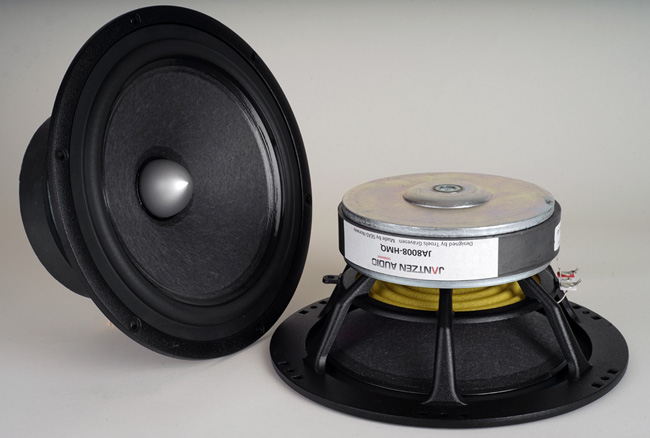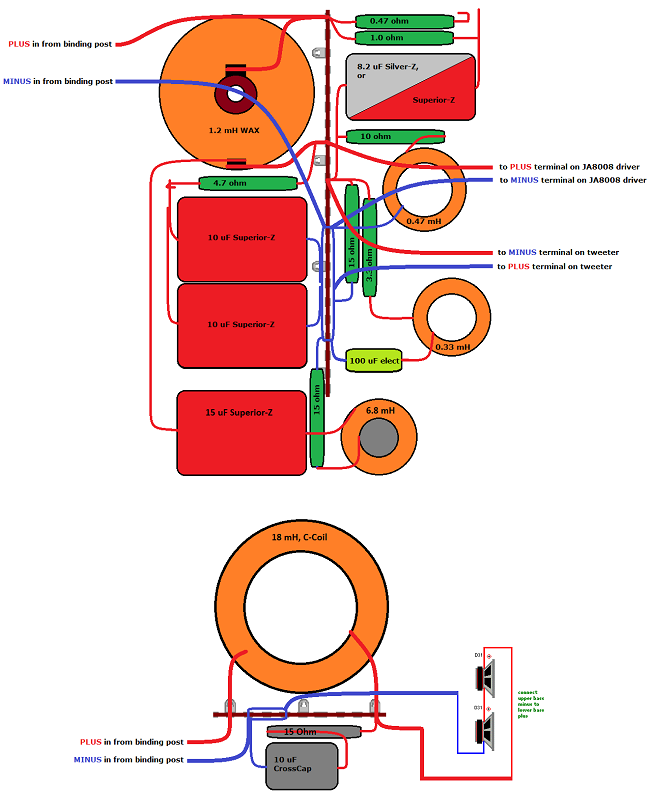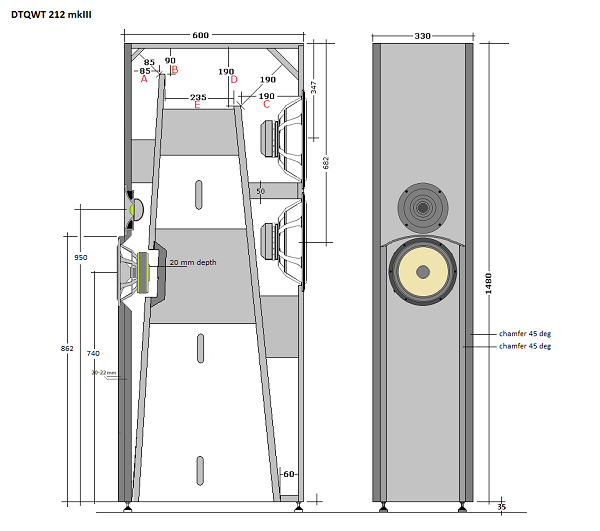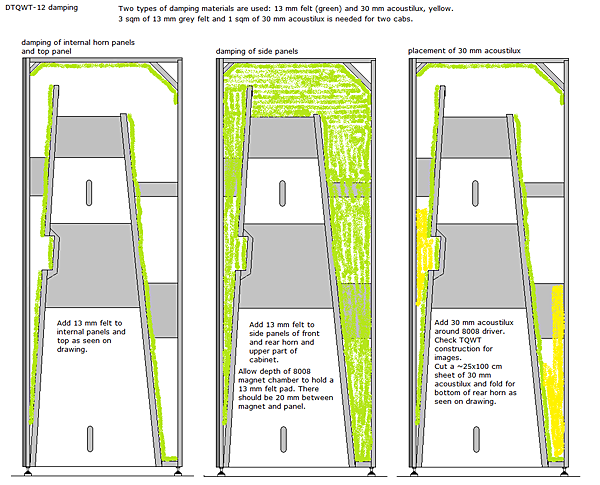DIY Loudspeakers: HOME INDEX UPDATES RESPONSE WHAT'S NEW
DTQWT-212 mkIII
Copyright 2023 © Troels Gravesen
DTQWT featuring two 12" EMINENCE bass drivers.
The new version is called "212" not to confuse it with the DTQWT-mkIII
that use a single 12" bass driver.
The kit is the same as for DTQWT-mkIII for 2 x 10" bass drivers.
1. The DTQWT-212 main driver,
JA8008, is now replaced by new
JA8008-HMQ driver.
2. Apply DTQWT mkIII stepped front panel design
to cabinet seen below and use
3. TQWT-mkIII crossover combined with bass
crossover seen below.
Go to on this page:
CROSSOVER
CABINETS
THE KIT
CROSSOVER LAYOUT
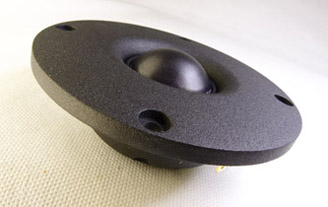
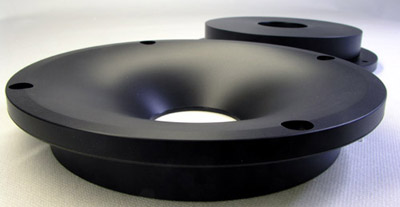
T35C002 tweeter and waveguide.
Read instruction from
DTQWT
mkIII for how to mount waveguide.
There are tolerances on the flange of the waveguide, 7-8 mm, so don't
route for this until you have it at hand!
Before starting a DTQWT-212 project, please read entire DTQWT file as everything is the same except for size of bass drivers and cabinet dimensions. Here you'll learn about the rationale for the double-tapered quarterwave horns. Also read TQWT to learn about the choice of main drivers, JA8008 and SEAS T35C002, used in the constructions.
A few people have misinterpreted the DTQWT-212 due to the two 12" bass drivers and think it can load 100+ square metre rooms and cope with the same amount of power we would only feed 15" PA drivers with huge 4" voice coils. The DTQWT-12 is still a 2-way from a high-efficiency 8" driver and a 1½" dome, only added extra bass drivers. Treat it as such.
Like the TQWT and DTQWT-10" the DTQWT-212 is developed for low-wattage valve amps or high-quality class-A amps of modest power and not for 200-400 watt solid state amps. DO NOT be seduced by the two 12" bass drivers thinking this can load a 300 cubic meter living space or a larger surround theater. The 8008 front driver does not have a high-pass filter which has indisputable advantages but also limits power handling as it received the full bass load. If you want a speaker that can handle larger listening space volumes, take a look at the OBL-15. This speaker can make your ears bleed.
Ever since I made the
TQWT I had this
speaker in mind, the ultimate DTQWT with two 12" bass drivers loading a
~3 meter horn, thus the 8" JA8008 extended range driver supplemented by
SEAS T35C002 tweeter loading a modest waveguide.
Ultimate DTQWT? Well, we can always go to the extreme and build a
two-and-a-half meter high speaker with two-three 15" bass drivers - or
build a new house with in-built 10 meter bass horns, but I think this
will do for some time. I'm sure only a few will apply for a total of 600
liters cabinets in their living room as these will require.
The cabinet has grown to almost 152 cm height and 33 x 60 cm (WxD), so
these are quite big speakers with brutto volumes of 297 litres and
basically we're dealing with an expansion of the DTQWT bass horn
proportional to the membrane area of the bass drivers.
Bass drivers.
For the DTQWT-12: Eminence Deltalite II 2512, available from e.g.
Thoman/Germany. Download data sheet
here.
I have been more than satisfied with the Eminence Deltalite bass drivers
in the
DTQWT-mkII (10") and
OB-9 +
OBL-11
(15") , so it was obvious to take a look at the Deltalite II 2512 for
the DTQWT-12.
Over the years I've had many questions on alternative bass drivers and I
can't tell because I've never tried them. Finding PA bass drivers -
because we need a healthy 95 dB sensitivity - with a suitable low Fs is
not easy and usually PA drivers feature significant higher Fs than
claimed in specs. This Eminence driver is close to its promised 37 Hz,
but PA drivers are often pretty rigid out of the box and I always do
some "break-in" by pushing and pulling the membranes to their limit
before mounting. On a fresh unit you can hear the lacquer on the spider
cracking when doing so. This will do the same as at least 50 hours off
burn-in. Take care and do no puncture the membrane with your fingers
when doing so. In addition to this - and if you have a test CD with some
40-50 Hz sine waves - give the bass drivers a couple of hours at +/- 6-8
mm membrane excursion. All this helps loosen the suspensions and reach
optimum performance quickly.
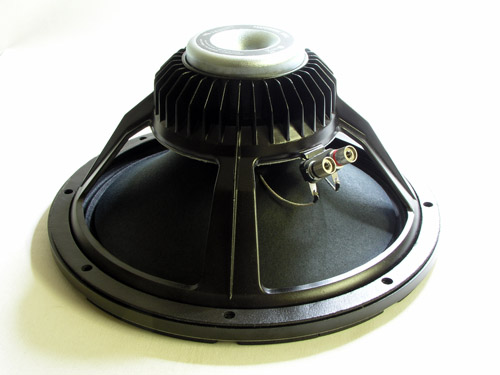
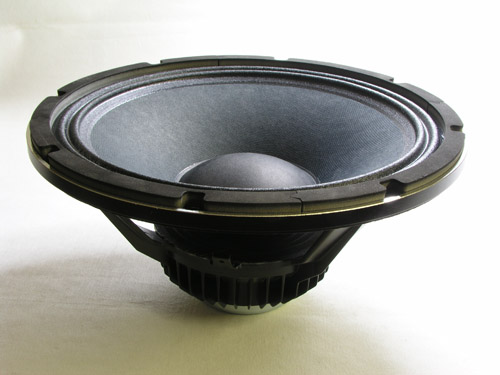
Deltalite II 2512 bass drivers.
Download data sheet
here.
These Eminence bass drivers have an excellent performance/cost ratio.
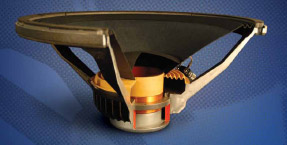

HOW, WHERE AND HOW
MUCH?
BACK TO TOP
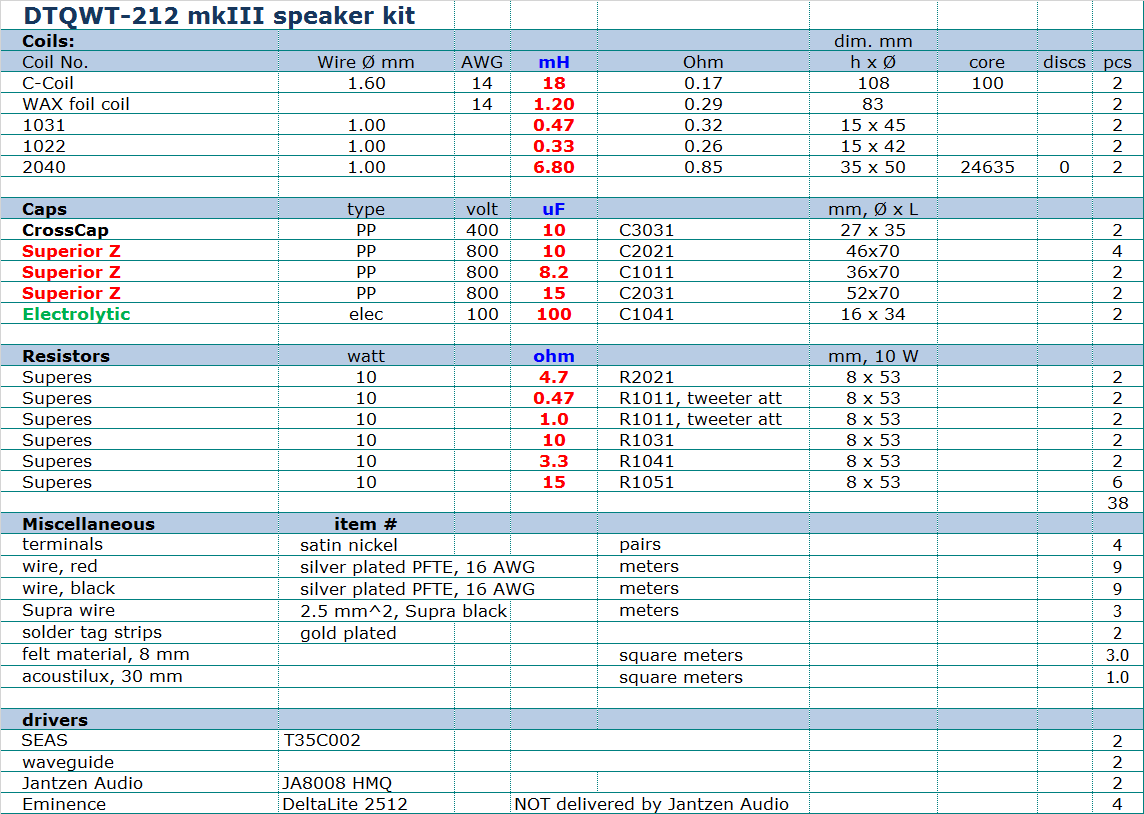
Download kit sale presentations here, pdf file with all options
All kit and component prices may be subject to change and are always to be confirmed by Jantzen Audio Denmark.
Mail your address and ask for shipping cost at: contact@jantzen-audio.com
Kit
contains all drivers (excl. bass drivers), waveguides, crossover
components incl. comp. for bass drivers.
More options available with regard to choice of coils and caps. Please
specify.
Bass drivers: Eminence Deltalite II 2512, available from e.g. Thoman/Germany
All technical questions at: troels.gravesen@hotmail.com
Cabinets, how to get started:
For the DTQWT-12 mkIII: Add DTQWT-mkIII stepped front panel design by
extending tweeter plane panel.
1. Cut four sheets of 560 x 1480 mm for sides. For sides, rear and top
panels some 22-27 mm panels can be used. Keep outer dimensions and
dimensions A, B, C and D the same and allow some variation in dimension
E. Marked with read on drawing above. For internal panels, 19-22 mm
panels will do.
2. Cut two sheets 560 x 330 mm for top panels. I prefer to cut 45 deg to
the top to make nice joints.
3. Make rebates in side panels for rear panel. Cut to a depth equal to
the thickness of the rear panel, e.g. 27 mm if made from 27 mm Baltic
birch.
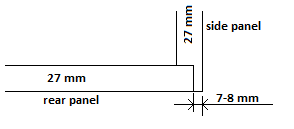
4. Tape side panels and top panels together and determine the width of
the rear panel exactly and cut accordingly. Now you can tape on rear
panel as well.
5. Make a drawing of the interior panels on one of the side panels and
measure their length. Measure the exact width of the interior panels and
cut accordingly.
6. Assemble one side panel, top panel, rear panel and interior panel
with tape and determine the position of the bracings as shown on
drawing. Exact position is not critical, just as close to the drawing as
possible.
7. Determine the position of the 8008 driver and make an Ø 150 mm hole
for the magnet. Make and e.g. 170 mm diameter disc to cover the hole.
8. Now you should be able to assemble the whole speaker sans front
panel.
9. Once assembled determine the length and width of the front panel and
cut accordingly. You can use 20-22 mm panels for the front panels.
Chamfer sides 45 deg as seen in drawing. Exact dimensions are not
critical. The outer panel is only from bottom to top of 8008 driver. Use
a router to make the curved finish. Routing radius is 230 mm like the
DTQWT-mkIII.

10. Route for drivers - and not before you have them at hand! And don't
forget to make serious chamfering of 8008 hole due to the thick front
panel. Check out
TQWT
file to see how to route for drivers and waveguide.
11. Check out
DTQWT
file to see how to place damping material. Please calculate yourself how
much you need.
MDF or Baltic birch? The choice is yours and I wouldn't be able to tell
you the difference.
Please read the two files above to catch up on all the work and thoughts
that went into this giant speaker.
Cabinet damping
